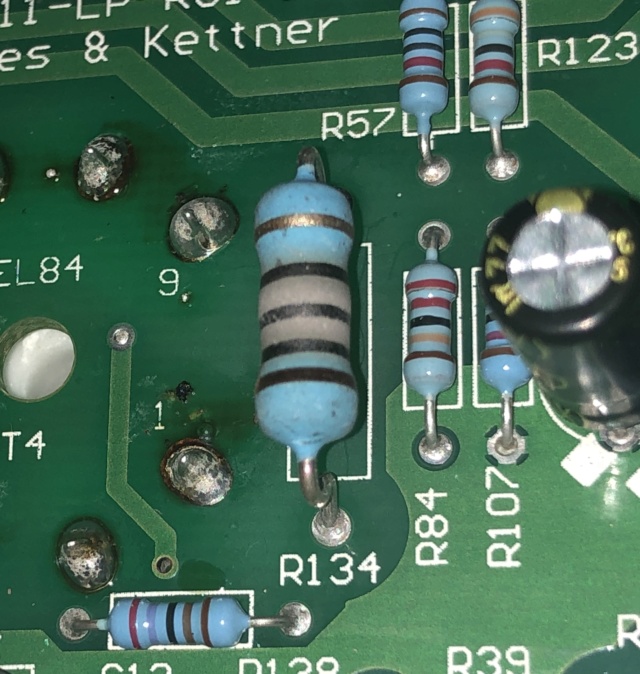After my Tubemeister 18 that I still own and I found great, I bought an used Tubemeister 36 30th Anniversary to have a little more headroom in some situation where my band and I have to play with basic amplification and guitars not mic'd.
I took it home, powered up and bang... one of the four TSC leds (the outer right) always on. I'm damn finicky, so, even the amp was playing good (I noticed a little background noise) I wanted to understand why the led was on. Strange, 30th Anniversary edition should be something like four years ago, a tube should live for years... anyway.
I opened the head and tried to swap the two outer tube and the issue seemed to be confirmed: now the outer left (where I put the suspect tube) was lighted and the outer right was blinking. According to the TSC system, that should mean that the suspect tube was faulty and the twin one was shut down by the system. Fine.
I ordered four JJ EL84 to replace them, once done I powered up the head again: the outer right led on again. The amp was playing great, less noise (maybe none at all), the tube was receiving power and it was lighted up (seen by eye, I mean), but why the led on? Maybe a TSC issue or not properly "calibrated"?
I took the suspect original tube again and tried it . Three JJ and one original. I was quite smooth, the TSC would bias everything.
Powered up the amp, smoke and smell of burned. Shhh.....t! Instant power off, replaced the tube and tried again: the amp was working good. TSC outer right led still on. Why the smoke?!
Because I'm mad and silly, I tried to test the inner couple replacing the brand new JJ with the faulty tube and another original working tube. Smoke and smell again, then a small "pop", all TSC leds on and no more sound by the amp.
F....ck.
I let it cool down, I disassembled it, now I've found four 2W resistors, I think what they call "anode fuse" (or cathode, I don't remember), three of them visibly burned.
They are R134, R93, R92 and R133. The only one that seems fine is R93. The problem is, while I can see the color of stripes on three resistor, I can't really read the ones (especially the central stripe) of R133... I think that could be the issue, but I don't know how to replace it since I don't know its value.

I searched everywhere on the Internet looking for a service manual... that I found for the Grandmeister, but not the Tubemeister... I tired to mail the H&K support with no luck, then tried to contact them via Facebook, but they answered me they don't send service manual or values directly to customers, but invited me to take it to an authorized service (that's far away from my town)... this used amp would cost too much for a servicing.
R134 seems weird to me, too... it seems to be a "zero value" resistor?!

Anyone could please help me?
Thanks, thanks, thanks to everyone.
Rob.



